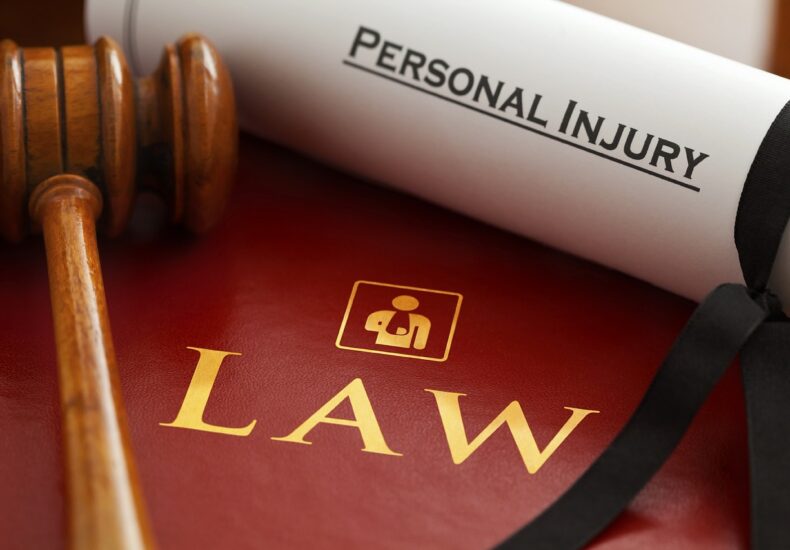
Personal Injury Lawyer Compensation
-
Table of Contents
- Personal Injury Lawyer Maximizes Compensation
- The Role of a Personal Injury Lawyer
- Investigating the Accident
- Case Study: Car Accident Investigation
- Negotiating with Insurance Companies
- Example: Settlement Negotiation
- Representing Clients in Court
- Case Study: Courtroom Success
- Advising Clients on Legal Rights and Options
- Example: Legal Guidance
- Maximizing Compensation: Key Strategies
- Example: Comprehensive Compensation
- Conclusion
Personal Injury Lawyer Compensation
When faced with the aftermath of an accident, victims often find themselves overwhelmed by medical bills, lost wages, and emotional distress. A personal injury lawyer can be a crucial ally in navigating these challenges and securing the compensation needed for recovery. This article explores how a personal injury lawyer maximizes compensation for their clients, providing valuable insights and examples.
The Role of a Personal Injury Lawyer
A personal injury lawyer specializes in representing individuals who have been injured due to the negligence or wrongdoing of others. Their primary goal is to ensure that their clients receive fair compensation for their injuries and losses. This involves a range of tasks, including:
- Investigating the accident and gathering evidence
- Negotiating with insurance companies
- Representing clients in court if necessary
- Advising clients on legal rights and options
Investigating the Accident
One of the first steps a personal injury lawyer takes is to thoroughly investigate the accident. This involves collecting evidence such as police reports, medical records, witness statements, and photographs of the accident scene. By building a strong case, the lawyer can demonstrate the extent of the injuries and the liability of the responsible party.
Case Study: Car Accident Investigation
Consider a case where a client was involved in a car accident caused by a distracted driver. The personal injury lawyer would gather evidence such as traffic camera footage, cell phone records, and eyewitness accounts to prove that the other driver was at fault. This comprehensive investigation helps in negotiating a higher settlement with the insurance company.
Negotiating with Insurance Companies
Insurance companies often aim to minimize payouts to protect their bottom line. A personal injury lawyer has the expertise to negotiate effectively with these companies, ensuring that their clients receive the compensation they deserve. This involves presenting a well-documented case and countering any attempts by the insurance company to downplay the severity of the injuries.
Example: Settlement Negotiation
In a slip-and-fall case, the insurance company might initially offer a low settlement, arguing that the injuries are not severe. The personal injury lawyer would present medical records, expert testimony, and evidence of the hazardous conditions that led to the fall. By demonstrating the true impact of the injuries, the lawyer can secure a higher settlement for the client.
Representing Clients in Court
If a fair settlement cannot be reached through negotiation, a personal injury lawyer is prepared to take the case to court. This involves presenting the evidence, questioning witnesses, and making compelling arguments to the judge and jury. The lawyer’s courtroom experience and knowledge of legal procedures are invaluable in achieving a favorable outcome.
Case Study: Courtroom Success
In a medical malpractice case, a client suffered severe complications due to a surgical error. The personal injury lawyer presented expert testimony from medical professionals, detailed medical records, and evidence of the surgeon’s negligence. The jury awarded a substantial verdict, providing the client with the compensation needed for ongoing medical care and rehabilitation.
Advising Clients on Legal Rights and Options
A personal injury lawyer provides clients with clear and informed advice on their legal rights and options. This includes explaining the potential outcomes of the case, the likelihood of success, and the steps involved in pursuing a claim. By keeping clients informed and involved, the lawyer helps them make the best decisions for their situation.
Example: Legal Guidance
A client injured in a workplace accident might be unsure whether to file a workers’ compensation claim or pursue a personal injury lawsuit. The personal injury lawyer would explain the differences between the two options, the potential benefits and drawbacks of each, and help the client choose the best course of action.
Maximizing Compensation: Key Strategies
Personal injury lawyers employ several strategies to maximize compensation for their clients. These include:
- Thoroughly documenting all injuries and losses
- Engaging expert witnesses to support the case
- Calculating future medical expenses and lost wages
- Considering non-economic damages such as pain and suffering
Example: Comprehensive Compensation
In a case involving a severe injury, the personal injury lawyer would not only seek compensation for current medical bills and lost wages but also for future medical expenses, rehabilitation costs, and the impact on the client’s quality of life. By presenting a comprehensive view of the client’s needs, the lawyer can secure a more substantial settlement or verdict.
Conclusion
Personal injury lawyers play a vital role in helping accident victims secure the compensation they need to recover and move forward with their lives. Through thorough investigation, skilled negotiation, effective courtroom representation, and informed legal advice, these professionals maximize compensation for their clients. By understanding the strategies and examples outlined in this article, individuals can better appreciate the value of hiring a personal injury lawyer when faced with the challenges of an injury claim.
- Mushroom Coffee and Digestive Tract Health And Wellness: Uncovering the Link
- Motivational Stories From People That Changed Their Health And Wellness With Shrooms!
- Can CBD Oil Help Your Furry Buddy? Benefits and Makes Use Of for Dogs
- The Science Behind CBD Oil for Pet Dogs: What Every Pet Dog Moms And Dad Ought To Know
- Is a 401k to Gold IRA Rollover Right for You? Key Considerations and Tips